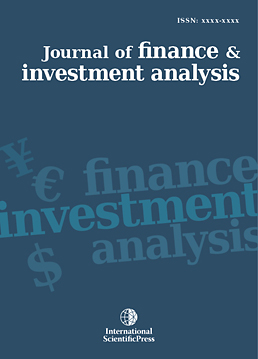Journal of Finance and Investment Analysis
Does Cash Flows Useful in Predicting the Company’s Financial Health? Empirical Validation by Panel Cointegration Tests
-
 [ Download ]
[ Download ]
- Times downloaded: 9311
Abstract
The aim of this article is to test the usefulness of cash flows as a measure of companies' financial health. Our approach is different from the previous studies which have animated the debate on the comparison of the explanatory power between accrual and cash-flow. Indeed, we use current developments in cointegration tests on non-stationary dynamic panel data to test the existence of a long-run equilibrium relationship between a ratio based on cash flows (i.e., operating cash flow to total assets ratio) and four financial ratios based on accounting data, namely: working capital to total assets ratio, asset turnover ratio, return on assets ratio, and debt-assets ratio. These four financial ratios are commonly known as relevant indicators regarding the company's financial health regarding its liquidity, operational efficiency profitability, and solvency. Precisely, the panel unit root tests (Im, Pesaran, and Shin (2003)) and the panel cointegration tests (Pedroni (2004)) are applied on a sample of 150 American firms over the period 2010-2017. Our main results led to conclude that the cash flow has an informational content and a significant explanatory power in the prediction of the company’s financial health. We provide some explanations for these findings which are supported by a robustness analysis using panel error correction models (PECM).
JEL classification numbers: G30, G33, L25, M10.
Keywords: Cash flows, Accruals, Financial health, Explanatory power, Panel cointegration tests.
